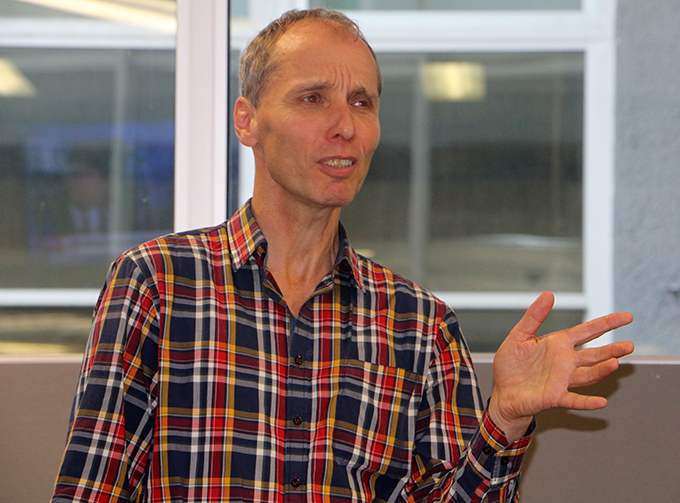
By Kendall Hutt in Auckland
Investigative journalist and author Nicky Hager has taken journalism students inside the process behind the controversial book Hit & Run, outlining an example of investigative journalism.
He described Hit & Run as a book which “reconstructs a crime scene” five or six years after a botched raid by New Zealand’s SAS allegedly killed six and wounded 15 innocent civilians, as opposed to the fighters believed responsible for killing a fellow soldier in a roadside bomb in Afghanistan in 2010.
But more importantly, Hager told students and staff at Auckland University of Technology last week, Hit & Run — co-authored with independent journalist Jon Stephenson — concerned “local business”.
“This is about us as New Zealanders and our military, that we pay for, and works on our behalf, whether it is sticking up for the values and beliefs and playing the role that we would want our country playing in the world, which we’ve got every right as New Zealanders to have opinions about, and feel strongly about,” he said.
“This is our business.”
1000-piece jigsaw puzzle
Hager described investigative journalism as a “related trade” to more traditional, everyday journalism, which is the “bloodstream of democracy”.
Hager told the third-year journalism students investigative journalism – sometimes a 1000-piece jigsaw puzzle – could take “weeks, months, years” and explained it differed from regular journalism due to a few, key “ingredients”.
“Investigative journalism is actually just the people who put the time into chasing up that issue and sticking with it until they crack it.
“In other words, there’s no reason why anybody can’t be doing the work I’m talking about. Who has that public interest motivation, who likes research, and has some determination to stick at something until they crack it. Those are the ingredients.”
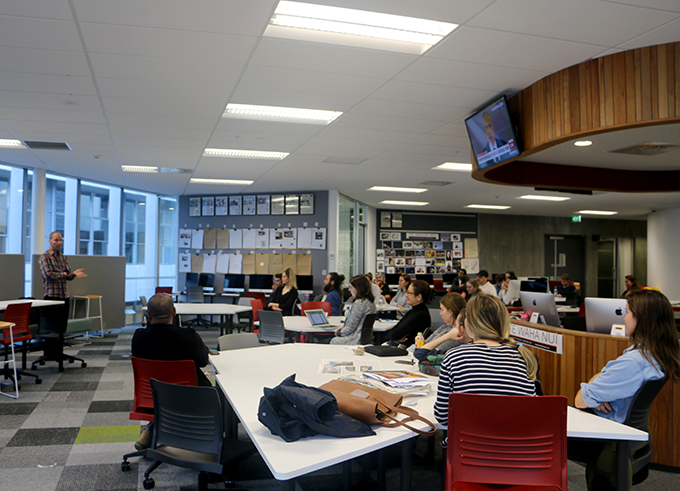
Hager also said drawing information together “is one of the vital components of investigative journalism”.
“It’s trying to crack the facts.”
More importantly, Hager stressed, investigative journalism is about protecting sources.
‘Am I hiding my sources?’
“When I’m writing, I’m always asking myself: ‘Am I hiding my sources well enough?’ Half my brain is in source-protection mode.”
This was true of Hit & Run, Hager said.
“From the very first meetings, I had to make sure that there were no connections between us, so for when the inevitable witchhunt came, nobody would be able to find a connection. No metadata.
“There is no story which is worth ruining someone’s life for.”
Speaking with Asia Pacific Report after the talk, Hager said this was highly important in New Zealand, where a culture of persecuting whistleblowers exists.
“New Zealand is very unkind to whistleblowers. Apart from an occasional, very brave, determined person, hopefully near the end of their career who speaks up, I usually would never recommend someone to be a whistleblower in the sense of being open.
‘We’re going to skin them alive’
“I think it’s much safer for people to leak. We’re a small society where the ‘old boys’ network’ can punish people too much.”
Hager said this was disappointing, given New Zealand’s “long and honourable history” in which people from every sector of society quietly talk to journalists and politicians.
But the ‘old boys’ network’ will not be a deterrent, Hager affirmed.
“As long as we’ve got a country where people want information, there will be people leaking information, that’s guaranteed. We’ll keep going.”
However, he added the military’s actions after the release of Hit & Run prove it has every intention to “punish whistleblowers”.
“They’re having an inquiry right now and the inquiry’s called: ‘Which bastards spoke to them, and we’re going to skin them alive.”
Hager said Hit & Run was the “real story” behind New Zealand’s military role in Afghanistan, in which the SAS had been involved in a “misguided, disastrous raid”.
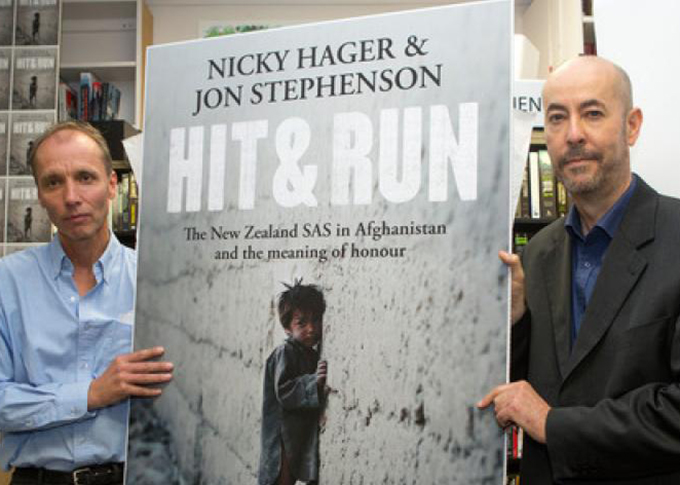
‘Unscrupulously covered up’
“It struck me that if we could take one incident from a war, out of all the incidents, and write it really carefully and fully, then somebody who bothered to read that would actually – hopefully – get what a war is like: Real people, in a real situation, where people are fighting on sides and trying to kill each other. Who are these people?”
He also told Asia Pacific Report his thoughts on the military’s decision to hold no inquiry on the claims made in Hit & Run, the origins of which have been “unscrupulously covered up”.
“The military’s reaction to Hit & Run is nothing more than a continuation of a cover-up. This is what a cover-up looks like. They are dodging and weaving. Their arguments are weak, but there’s an underlying determination not to be scrutinised.
“In a normal government world, if someone had been accused of serious things, which they thought weren’t true, they’d want there to be an inquiry, they’d want someone to look at the facts and say, ‘those scurrilous authors were wrong and our reputations have been impugned’. But they don’t want that because we’re right. So what we’re seeing is them desperately trying to avoid being caught out.”
More importantly, the claims made in Hit & Run, Hager said, reveal a problem at the heart of the New Zealand military — secrecy.
“We’re seeing the inevitable results of an organisation which is too secretive. That believes it can keep all of its activities secret. This comes out in all sorts of dodgy, and petty, behaviour inside the Defence Force, because they’ve got used to never being properly scrutinised.
“We’re seeing a systemic problem in a secretive organisation which shouldn’t be so secret.”
On a more positive note, however, Hager closed his talk with a final piece of advice for the aspiring journalists in the room:
“We should be absolutely trustworthy.”
- Innovation and collaboration key to success: Nicky Hager
- Authors of new book call for full inquiry into SAS ‘betrayal’ claim
- SAS soldier backs up Afghan raid claims – Herald calls for inquiry
- Hit & Run review – a painstaking and dangerous book challenge
- Hit & Run reply: This is what a military cover-up looks like




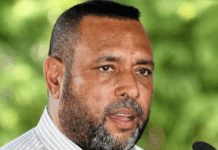

























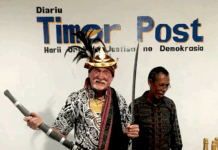














Good to read that NH is talking with students.
Comments are closed.